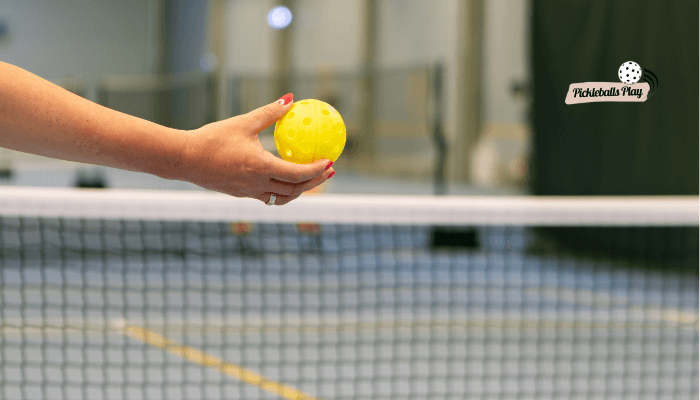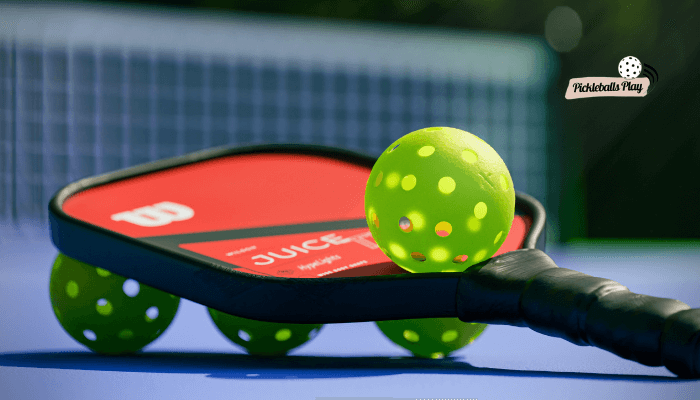Unlocking the Power of the Dink Shot in Pickleball
Are you ready to dive into the world of pickleball and explore the incredible technique known as the dink shot? Well, you’re in luck! Today, we’re going to uncover the secrets behind this skill and discuss why it’s so important in the game of pickleball.
What Is a Dink Shot in Pickleball?
A dink shot is a strategic move in pickleball where you hit the ball softly and keep it low, making it difficult for your opponent to return. This shot, also known as a “half volley,” is particularly effective when your opponent is near the non-volley zone line (NVZ).

To execute the perfect dink shot, you can use either a forehand or backhand stroke, but it’s crucial to find the right balance and avoid hitting too hard. Additionally, incorporating a dink shot into your advanced strategy can give you a tactical advantage, especially after hitting a powerful overhead smash.
Not only does the dink shot help you regain control of the game if you find yourself out of position, but it can also be a game-changer when played defensively.
How to Master the Dink Shot
Now that you understand the importance of the dink shot, let’s delve into the nitty-gritty of how to play it like a pro.
First, position your paddle slightly behind the ball and use an underhand motion to hit it lightly with a soft stroke. Remember to make contact with the ball just above its center for maximum accuracy and control. Keep your paddle low and parallel to the court surface to unleash optimum power.
Consistency is key when it comes to executing the dink shot, so practice making small adjustments as necessary.
And here’s a pro tip: Timing is everything! Focus on maintaining consistency throughout each rally for a truly impressive dink shot performance.
When to Utilize the Dink Shot
Knowing when to unleash the power of the dink shot is essential. Generally, it’s best to utilize this shot when your opponent is far away from the net, giving you the opportunity to make contact without stretching too much.
Additionally, the dink shot is perfect when your opponent is off balance or has committed too early, making it nearly impossible for them to recover in time for the return shot.
When serving, if there isn’t enough space for an aggressive serve, go for a dink shot instead. This will put immense pressure on your opponent and allow you to gain the upper hand from the get-go.
Always keep in mind that dinking is a fantastic defensive strategy, providing an effortless way to keep the point going without expending too much energy.

The Difference Between Dinking and Drop Shots in Pickleball
Now, let’s clarify the distinction between two key shots in pickleball: the dink shot and the drop shot. Take a look at the table below for a quick comparison:
| Factors | Dink Shot | Drop Shot |
|---|---|---|
| Technique | Hit the ball softly and low over the net, usually just above waist height. | Hit the ball very softly and low over the net, usually just above ankle height. |
| Purpose | Used to keep an opponent from getting to a shot or as a defensive maneuver. | Used to force an opponent off balance or out of position for a return shot. |
| Power | Low | Very low |
| Result | Slower, longer rallies | Shorter rallies |
| Location | Close to the net | Far from the net |
| Spin/Rotation | Little to none | A heavy backspin can be added for more control |
| Difficulty | Easier | Harder |
| Recommended for | Beginners and players with slower swings | Advanced players and those with faster swings |
| Best Used | When opponents are far away from the net | When opponents are close to the net |
| Rules | No rules against using dink shot | Drop shots should not be hit too hard to be considered legal, as per the USAPA rules |
| Scoring | Not usually a scoring shot | Used as a scoring shot, if done correctly |
Technical Tips for Hitting Dinks Like a Pro
Are you ready to take your dink shot skills to the next level? Here are twelve technical tips that will help you hit dinks shots like an absolute pro:
- Ensure your paddle is correctly positioned for dinking, holding it lower than usual and near your body.
- Keep your grip neutral and relaxed, with a slight bend in the wrist for better control.
- Utilize short, quick strokes to minimize power and maximize accuracy.
- Stand close to the net, allowing you to adjust quickly if needed.
- Aim your shots carefully towards open areas of the court.
- Focus on keeping the ball low over the net with spin, rather than relying on hard or flat shots.
- Experiment with different types of dinks, such as forehand, backhand, or the third-ball drop.
- Master your footwork to position yourself with speed and precision for dink shots.
- Aim to hit the ball just over the kitchen line for more control and spin.
- Stay calm and focused during dink shots to make better decisions and increase accuracy.
- Incorporate spin into your dink shots for an added element of surprise.
- Enhance your hand-eye coordination and reaction time through practice to achieve lightning-fast and accurate dink shots.
Remember, honing your dink shot skills takes time and practice, so enjoy the journey and have fun on the court!
FAQs
How Do I Practice Dinks in Pickleball?
To practice dink shots in pickleball, start by standing with your feet shoulder-width apart and your paddle held out in front of you. Stand close enough to the net that a dink shot will reach it. Then, hit the ball lightly back and forth over the net in short bursts until you master the timing and ball placement. As you become more comfortable, gradually move further away from the net and focus on hitting more powerful shots across the court.
What Is the First Rule of Dinking in Pickleball?
The first rule of dinking in pickleball is to keep the ball low and slow. It requires short, accurate shots that land close to the net. Focus on achieving a soft touch and hitting the ball with a backspin. Practice good technique to refine your dink shot, avoiding excessive power or height that would make it easier for your opponent to return.
Where Should Dink Shots Be Placed on the Court?
For optimal placement, aim your dink shots close to the net. Shots in this area are easier to control due to the shorter distance. Additionally, try to place the ball in a spot where there is minimal open space around it. This makes it more challenging for your opponents to anticipate or block your dink shot. Consider directing the ball towards one side of the court, making it harder for defenders to get into a favorable position and predict your next move.
How Important is Dinking in Pickleball?
Dinking is an incredibly important skill to master in pickleball. It requires precision, accuracy, and finesse, allowing you to hit the ball into tight spaces and conquer hard-to-reach spots on the court. By mastering the art of dinking, you can effectively manipulate your opponents’ movements and increase your chances of winning points.
Conclusion
So, whether you’re a beginner just starting out or an advanced player looking to finesse your technique, incorporating the dink shot into your repertoire will undoubtedly elevate your pickleball game. Keep practicing, stay focused, and soon enough, you’ll be a dink shot maestro!



